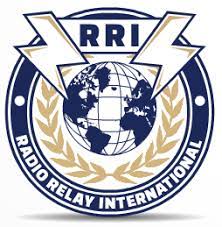Cognitive Dissonance in an Uncertain World

If there was not a better reason or time to promote the importance of both Packet Radio and the HF backbone network, please read the excellent article below!
By James Wades
By James Wades
Radio amateurs are subject to the same level of generational myopia and propensity for denial as any other group of human beings. Like many today, the average radio amateur has a hard time envisioning an environment in which cellular mobile data networks are inoperative or regional Internet connectivity is disrupted. Yet, recent events point to the vulnerability of our interconnected society.
These events should serve as a warning that commercial and government networks are quite vulnerable to both technological failure and cyber-attack. The recent AT&T outage and the “CrowdStrike” disruption to Microsoft-based IT platforms were caused by relatively simple “errors.” Yet, many smaller disruptions occur every day, such as 9-1-1 service outages and the occasional isolation of entire communities due to infrastructure damage.
The bombing of the Central Office in Nashville by a deranged IT technician is another excellent example of a serious disruption occurring at a ‘choke point” in the telecom environment. Cellular mobile data networks were disrupted throughout much of Tennessee and portions of Kentucky. In a world in which traditional “copper-to-central-office” alternatives no longer exist, the loss of several co-located mobile switching offices or the like can be quite catastrophic over a broad area.
Wildfires have a proven track record of destroying cellular system infrastructure, often doing so before “reverse 9-1-1” and similar cellular mobile data network-based warning systems can be pressed into service. The infamous “Camp Fire” and the more recent Lahaina Fire are excellent examples.
Interestingly, radio amateurs do not appear to be planning for such events. Through cooperation with local emergency services, Amateur Radio clubs and EmComm organizations could do much to plan for and to provide connectivity from neighborhoods to public safety answering points (dispatch centers) during 9-1-1 outages. For longer-term outages, a program such as the RRI sponsored “National SOS Radio Network” capability could also prove very helpful if combined with suitable public service announcements over terrestrial broadcast media.
Smaller-scale situations could also be supported by radio amateurs. For example, a recent day-long telephone and Internet outage near Chicago left schools and similar important facilities without either “landline” or cellular telephone service for an entire day. For example, how would a school request emergency services in such a case. Yet, neither the local emergency management program nor the local EmComm group had a plan in place for such an event.
Cognitive dissonance is powerful. We are so used to a reliable, robust wireless infrastructure that even those with knowledge of its vulnerabilities have a difficult time imagining a scenario in which such connectivity is unavailable. Yet others retain the mindset that all communications emergencies must be associated with large-scale, catastrophic events, such as hurricanes and earthquakes, when in reality, a cut fiber optic cable or a fire in a central office may be sufficient to disrupt local or regional systems.
Perhaps too many radio amateurs are like their non-technical peers. The average citizen today is so addicted to the “tech narcotic” that he is very well entertained, but very poorly informed and poorly motivated. It’s simply too easy to sit back in an easy chair and stare at a glowing monitor saturated in rich primary colors and constantly changing imagery in which our imagining and creating is done for us by others, and which, in the end, isolates us from living a genuine, experiential life of creativity and purpose.
If the Amateur Radio Service is to fulfill its community service obligations, perhaps the time has come to take a fresh look at the emergency communications mission. Let’s examine the vulnerabilities of our essential systems and plan to mitigate failures when they occur. Let’s create robust infrastructure by using OUR OWN SYSTEMS to provide both essential and value-added data and information to our served agencies, rather than relying on the Internet like everyone else. Perhaps we need a collective “slap in the face” and a loud voice that says: “Wake up! What are you doing with that valuable RF spectrum you control?”


